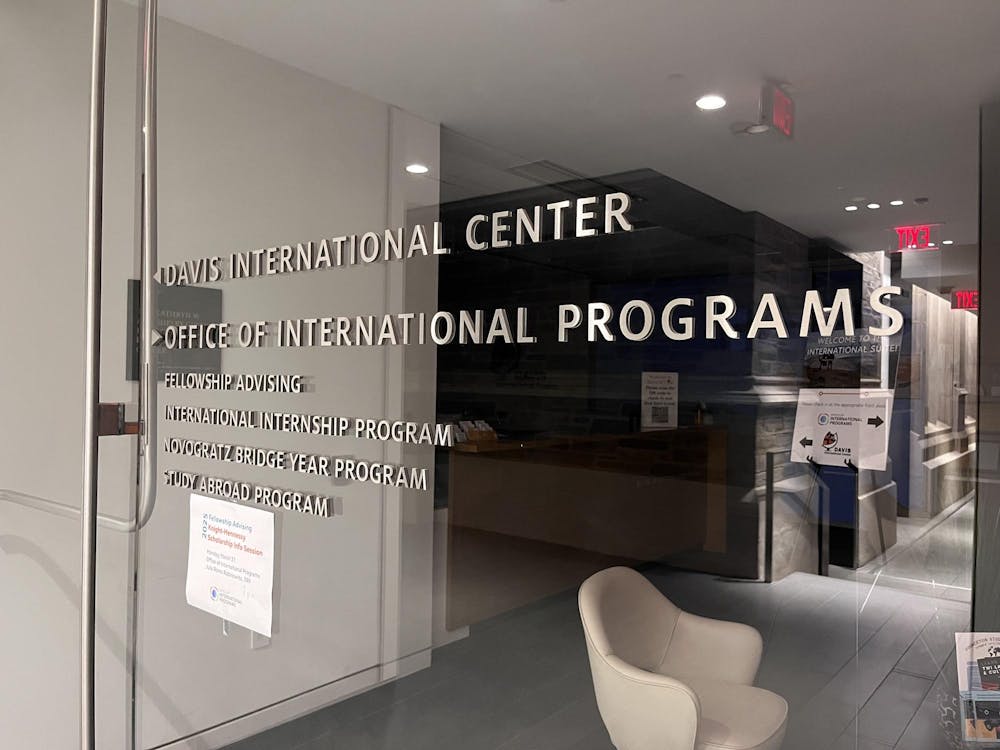By 2020, the University hopes to reduce carbon dioxide emissions to 1990 levels, or 95,000 metric tons per year, a “very ambitious goal,” Executive Vice President Mark Burstein said in an interview with The Daily Princetonian. This would be a 16 percent reduction from the 114,000 metric tons emitted in the 2007 fiscal year, he added.
“Because we’re committed to reaching the goals in the [Sustainability] Plan, and many of these goals also save the University money, the staff that are working to implement the plan have full access to resources to accomplish the University’s goal,” Burstein said. He added that the investment will save the University $8.5 million annually over the next 20 to 30 years.
The University has already decreased greenhouse gas emissions by nearly 1 percent from July 2008 to July 2009 as part of its sustainability efforts, the report stated. This was the first decrease since a new cogeneration plant was installed in 1996.
Burstein explained that many other universities have invested in offsets, such as tree planting, that reduce carbon emissions off-site. The University, however, is “committed to decreasing our own activity,” Burstein said.
The cogeneration plant and transportation currently account for the greatest portion of campus carbon emissions, according to the report. It is hoped that carpool and public transportation initiatives targeted toward faculty and staff will decrease the number of cars commuting to campus by 10 percent.
Plans for new buildings and renovations on existing buildings have also been geared toward having 30 percent less energy cost than a standard off-campus building.
During the first year and a half of the Sustainability Plan, the “major effort has been putting infrastructure in place” that will lead to even greater carbon dioxide emissions in the years to come, Burstein said. “Twenty-eight people in our Office of Design and Construction are now LEED certified,” he added, referring to individual certification for comprehension of the Leadership in Energy and Environmental Design (LEED) Green Building Rating System.
Students play an integral role as well, particularly in conserving resources.

Carol Dreibelbis ’11, a project manager in the Office of Sustainability, said she has noticed a significant decline in food waste from the dining halls. A larger portion of waste is sent to be reused, often as slop for pig farms rather than being discarded, Dreibelbis said.
Other conservation programs include increasing sustainable food and recycled paper purchases, composting and reusing landscape trimmings, and converting impermeable land to allow water infiltration.
Kelley Taylor ’11, also a project manager in the Office of Sustainability, said she noticed significant increases in the amount of environmental courses offered by the University, the number and departmental diversity of students who pursue the environmental studies certificate, and the environmental research initiatives on campus.
Jeff Domanski, associate manager of the Office of Sustainability, noted, though, that plans to promote sustainability are always evolving. Sometimes addressing challenges can “raise more questions [and] identify more needs,” he said.

If efforts are to succeed, however, there must be “a shift in culture,” explained Shana Weber, manager of the Office of Sustainability. Technological innovations must be complemented by changes on an individual level, she said, adding that part of the plan includes examining what it is that “makes us think about our daily decisions.”
“If we as individuals do nothing to reduce our own consumption footprint, we’ll be working against the technological improvements that we put in place,” Weber said.
Such lifestyle changes may already be underway. Kyle Soloff ’11, a member of the Student Environmental Communications Network, said he has noticed increased environmental awareness on campus. Taylor echoed Soloff’s sentiment, noting that she thinks students are “very aware” of conserving paper and water.
Burstein added, “Students think about these issues much more completely and aggressively than they did 10 or 15 years ago.”







